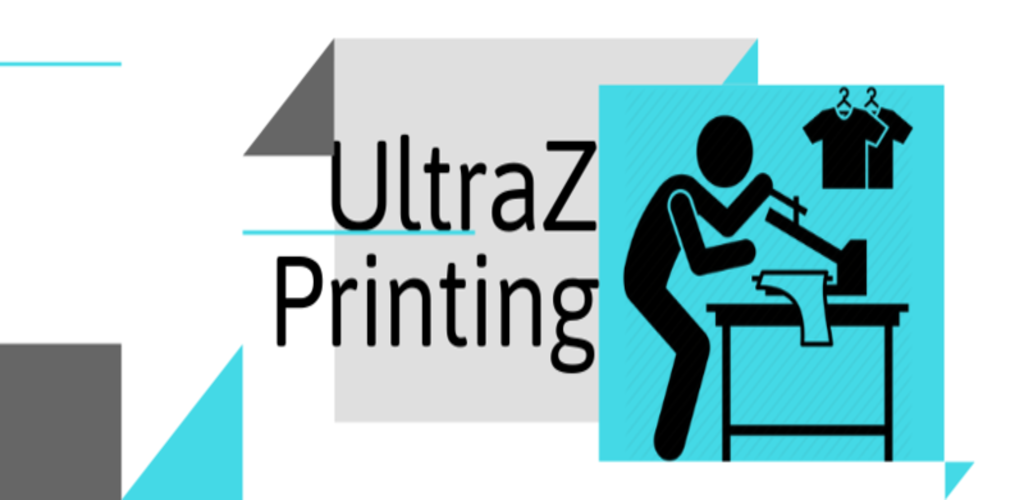Unleashing the Power of Print on Demand: How to Start and Succeed in the Booming Business

I. Introduction
The Rise of Print on Demand Exploring the Potential of the Market

II. Understanding Print on Demand
What is Print on Demand?
Print on Demand is a unique business model that allows entrepreneurs to create custom-designed products without the need for large upfront investments or storage space. It enables individuals to sell products on their online platforms, such as websites or marketplaces, by partnering with print providers who handle the production, order fulfillment, and shipping processes.
How Does Print on Demand Work?
Print on Demand works by integrating design software or tools with seamless order processing systems. It allows customers to personalize and modify the designs of products themselves, ensuring a highly personalized shopping experience. When an order is placed, the design files are sent to the print partner who then prints the design onto the selected product and ships it directly to the customer.
Comparing Print on Demand to Traditional Printing Methods
In contrast to traditional printing methods, where products are printed in bulk and stored in inventory, print on demand eliminates the need for inventory management. Traditional printing methods often require significant upfront investments, whereas print on demand allows entrepreneurs to start their businesses with minimal costs and overhead.
III. Advantages of Print on Demand
Minimal Startup Costs and Overhead
One of the primary advantages of starting a print on demand business is the minimal startup costs involved. Entrepreneurs no longer need to invest in expensive printing equipment or hold inventory. By leveraging the expertise of print partners, individuals can focus on growing their business without the burden of upfront costs.
Eliminating Inventory Risks
With print on demand, the risk of holding unsold inventory is virtually eliminated. Since products are only printed when an order is placed, there is no need to worry about stockpiling products that might not sell. This reduces not only financial risks but also the storage space required for inventory.
Global Reach and Personalized Products
Print on demand offers entrepreneurs the unique opportunity to reach a global customer base. With just a few clicks, customers from different parts of the world can access and purchase personalized products. The ability to cater to individual preferences and create customized designs fosters a strong customer connection.
Flexibility and Scalability
Print on demand provides entrepreneurs with unparalleled flexibility and scalability. It allows individuals to test the market with new product ideas and designs without committing to large production runs. As demand increases, entrepreneurs can easily scale their business by partnering with additional print providers or expanding their product offerings.
IV. Setting up Your Print on Demand Business
Identifying Your Target Market
Before diving into the print on demand business, it is crucial to identify and understand your target market. Conduct market research to gain insights into the preferences, purchasing behaviors, and demographics of your potential customers. This will help you tailor your product offerings and marketing strategies to meet their needs effectively.
Choosing a Niche and Finding Your Unique Selling Point
To stand out in the print on demand industry, it is essential to choose a specific niche. Identify a market segment or target audience that possesses a unique set of needs or interests. By specializing in a particular niche, you can position yourself as an expert and differentiate your business from competitors.
Types of Products to Offer
Print on demand allows entrepreneurs to offer a wide range of products, including clothing, accessories, home decor, and more. Consider the demands of your target market and the compatibility of each product with your chosen niche. Offering a diverse range of unique, high-quality products will attract a broader customer base.
Sourcing Suppliers and Partners
To ensure the success of your print on demand business, it is crucial to partner with reliable suppliers and print providers. Look for suppliers who offer a wide range of products, excellent print quality, competitive pricing, and efficient order fulfillment and shipping services. Building strong relationships with your partners is key to maintaining customer satisfaction.
V. Designing Winning Products
Researching Current Trends and Market Demands
Stay up-to-date with current trends and market demands within your niche. Research popular designs, colors, patterns, and themes that resonate with your target audience. By offering products aligned with current trends, you can appeal to a broader customer base and increase sales.
Tips for Effective Product Design
When designing products for print on demand, consider factors such as aesthetics, usability, and customer preferences. Use bright and eye-catching colors, attractive typography, and engaging visuals to create visually appealing designs. Experiment with different design techniques to create unique and captivating products.
Utilizing Professional Design Tools and Mock-Up Generators
Invest in professional design tools and software to create high-quality designs for your products. Explore design software like Adobe Creative Cloud or Canva, which offer a plethora of customizable templates and design elements. Additionally, utilize mock-up generators to visualize your designs on various products, giving customers a realistic preview of the final product.
VI. Creating an Online Presence
Building Your Print on Demand Website
Having a well-designed and user-friendly website is crucial for your print on demand business. Choose a reliable e-commerce platform that offers customizable templates, seamless integrations, and secure payment gateways. Optimize your website for mobile devices, ensuring a responsive and accessible shopping experience.
Optimizing User Experience and Navigation
Create a streamlined user experience by organizing your website’s navigation and content logically. Ensure that important information, such as product descriptions, pricing, and shipping information, is easily accessible. Implement a search function and filters to help customers find specific products quickly.
Showcasing Your Products with High-Quality Images
High-quality images play a crucial role in showcasing your products effectively. Invest in professional product photography or use mock-up images to provide customers with an accurate representation of the final product. Highlight key design features and showcase any customization options available.
Implementing Secure Payment Gateways and Customer Support
Security is paramount when accepting online payments. Partner with reputable payment gateway providers that offer secure and encrypted transactions. Additionally, establish robust customer support systems, including live chat, email support, and an FAQ section, to promptly address customer inquiries and concerns.
VII. Marketing and Promotion Strategies
Crafting Compelling Product Descriptions and Listings
Write engaging product descriptions that highlight the unique features, benefits, and personalization options of your products. Incorporate persuasive language and emotional appeals to encourage customers to make a purchase. Utilize search engine optimization techniques to improve the visibility of your product listings in search engine results.
Social Media Marketing for Print on Demand
Leverage the power of social media platforms to promote your print on demand business and engage with your target audience. Create visually appealing content, share user-generated content, and run targeted advertisements to increase brand awareness and drive traffic to your website.
Influencer Collaborations and Brand Partnerships
Collaborate with influencers or align your brand with other complementary businesses to expand your reach and tap into new customer segments. Influencer partnerships can help generate buzz, credibility, and trust around your products, driving sales and brand loyalty.
Email Marketing Campaigns and Newsletters
Build a loyal customer base by implementing email marketing campaigns and newsletters. Regularly send promotional offers, new product launches, and engaging content to keep customers informed and encourage repeat purchases. Provide incentives, exclusive discounts, or personalized recommendations to establish a strong customer relationship.
VIII. Pricing, Profit Margins, and Costs
Calculating Profit Margins in Print on Demand
Calculate your profit margins by considering factors such as production costs, supplier fees, platform fees, and marketing expenses. Conduct regular cost analysis to ensure that your pricing remains competitive while still generating a sustainable profit margin.
Strategies for Competitive Pricing
Research the pricing strategies used by your competitors to set competitive prices for your products. Consider offering unique, premium-priced products alongside more affordable options to cater to different customer segments. Experiment with pricing strategies such as bundle deals, volume discounts, or limited-time promotions to attract customers and boost sales.
Monitoring and Managing Production Costs
Regularly review and analyze your production costs to identify possible areas of cost optimization. Consider factors such as material costs, printing fees, packaging, and shipping expenses. Negotiate with suppliers for better rates and explore alternative suppliers who offer competitive pricing without compromising quality.
IX. Order Fulfillment and Customer Satisfaction
Understanding the Order Fulfillment Process
Develop a clear understanding of the order fulfillment process to ensure smooth and efficient operations. Familiarize yourself with the fulfillment capabilities and lead times of your print partners to set accurate expectations for your customers.
Working with Print Partners and Shipping Providers
Maintain open and effective communication with your print partners and shipping providers. Ensure that products are printed and shipped on time, meeting quality standards and delivery deadlines. Build strong relationships with your partners to establish trust and streamline the fulfillment process.
Handling Returns, Refunds, and Customer Queries
Establish clear policies and procedures for handling returns, refunds, and customer queries. Respond promptly to customer inquiries and maintain transparency in your communication. Aim to resolve issues quickly and provide satisfactory solutions to ensure customer satisfaction.
Implementing Quality Control and Ensuring Customer Satisfaction
Prioritize product quality control to minimize the chances of receiving defective or damaged products. Conduct regular quality checks to ensure that the final products meet your standards. Address any quality concerns promptly to maintain a high level of customer satisfaction.
X. Scaling Your Print on Demand Business
Analyzing Sales and Growth Metrics
Regularly analyze sales data and growth metrics to gain insights into the performance of your print on demand business. Identify trends, best-selling products, and opportunities for further growth. Utilize analytics tools to track key performance indicators and make data-driven decisions.
Expanding Product Offerings and Target Markets
As your print on demand business grows, consider expanding your product offerings to cater to a wider customer base. Research new product ideas, listen to customer feedback, and monitor market trends to identify untapped opportunities. Additionally, explore entering new target markets and expand your marketing efforts to reach a larger audience.
Hiring Staff and Outsourcing Tasks
Scale your business by hiring staff or outsourcing certain tasks to handle increased order volumes more efficiently. Consider hiring designers, customer support representatives, or marketing specialists to offload responsibilities and ensure smooth operations as your business expands.
Utilizing Marketing Analytics and Data-Driven Strategies
Leverage marketing analytics to refine your marketing strategies for better results. Analyze customer data, website traffic, and engagement metrics to identify successful marketing channels and campaigns. Utilize insights gained from analytics to optimize your marketing efforts and drive further growth.
XI. Legal and Copyright Considerations
Trademarks, Copyrights, and Intellectual Property
Understand the importance of trademarks, copyrights, and protecting intellectual property when operating a print on demand business. Ensure that your designs and brand assets are original and that you hold the necessary rights before printing and selling products. Conduct thorough research and, if required, consult with legal professionals to avoid potential copyright infringement issues.
Design Rights and Protecting Your Work
Protect your designs and artistic creations by considering design rights and copyrights. Register your designs, trademarks, or unique branding elements to safeguard your intellectual property. Be cautious when using third-party designs and always obtain proper licensing or permissions to avoid legal disputes.
Legal Compliance in Different Countries and Jurisdictions
Familiarize yourself with the specific legal obligations and requirements for operating a print on demand business in different countries and jurisdictions. Stay updated with local tax laws, customs regulations, and consumer protection laws to ensure legal compliance. Seek expert advice and consult legal professionals when expanding into new markets.
XII. Challenges and Pitfalls to Avoid
Common Print on Demand Mistakes and Pitfalls
Many entrepreneurs face a variety of challenges when starting a print on demand business. Some common pitfalls include underestimating market competition, neglecting product quality control, and failing to effectively market and promote products. Stay vigilant and learn from others’ mistakes to avoid unnecessary setbacks.
Strategies to Overcome Printing and Production Issues
Printing and production issues can occasionally arise in the print on demand business. Develop good relationships with your print partners and maintain open communication to address and resolve issues promptly. Implement quality control procedures, conduct regular tests, and ensure that your partners adhere to agreed-upon quality standards.
Avoiding Copyright Infringement and Legal Disputes
To avoid copyright infringement and legal disputes, always use original designs or properly licensed designs. Conduct thorough research to ensure that your designs do not violate any intellectual property rights. If in doubt, seek legal advice to ensure compliance and protect your business from potential legal pitfalls.
XIII. Success Stories and Inspirational Case Studies
Real-World Examples of Print on Demand Success
Explore real-world examples of successful print on demand businesses to gain inspiration and valuable insights. Learn from entrepreneurs who have capitalized on market trends, identified unique niches, and built thriving businesses.
Learning from Established Print on Demand Entrepreneurs
Follow the journeys of established print on demand entrepreneurs who have successfully navigated the industry. Discover their tips, strategies, and lessons learned along the way. Apply their advice to your own business to increase the likelihood of success.
XIV. Summary and Key Takeaways
Recap of the Print on Demand Business Model
In summary, the print on demand business model offers entrepreneurs a low-risk approach to selling custom-designed products without the need for inventory or large upfront investments. By partnering with print providers, entrepreneurs can focus on designing and marketing their products while leaving production and fulfillment in the hands of professionals.
Essential Steps to Start and Succeed in Print on Demand
To start and succeed in the print on demand business, it is vital to identify your target market, choose a niche, and find your unique selling point. Select high-quality products, establish strong partnerships, and prioritize exceptional customer experiences. Continuously innovate, adapt to market trends, and aim for scalability to fuel long-term success.
XV. FAQs
What is the minimum investment required to start a Print on Demand business?
A significant advantage of the print on demand business model is its low entry barrier. The minimum investment required typically includes expenses related to setting up a website, marketing, and design tools/software. However, the investment varies depending on your specific business needs and the scale of your operation.
Can I use my own designs or do I need to hire a designer?
You can certainly use your own designs in a print on demand business. If you have design skills, you can create the artwork yourself. If not, you may opt to collaborate with freelance designers or use design services provided by print on demand platforms.
Is it possible to dropship Print on Demand products?
Yes, dropshipping is commonly used in the print on demand industry. With dropshipping, your print partner or supplier handles the packaging and shipping of the products directly to your customers. This allows you to focus solely on marketing and sales without the need for inventory management.
How do I handle customer complaints about product quality?
To address customer complaints about product quality, prioritize quality control throughout the production process. Work closely with your print partners to ensure that strict quality standards are maintained. If a customer complains about a defective or damaged product, promptly offer a resolution, such as a replacement or refund, and communicate openly to resolve the issue to their satisfaction.
Note: This article is intended for informational purposes only and should not be considered legal or financial advice. Entrepreneurs are encouraged to seek professional counsel before starting a print on demand business or making any business decisions.

